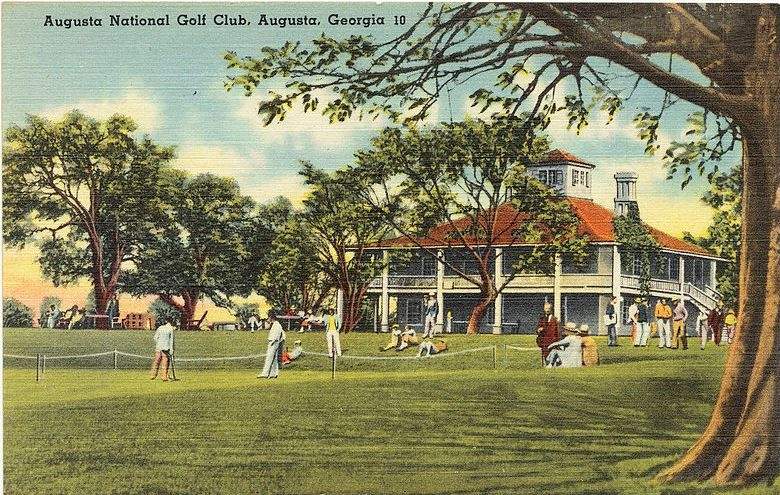
The Trees and Flowers of Augusta National
Welcome to GolfBlogger.Com. Come back daily for more new and original, independent golf content. See all of our best Masters Content at the link.
Augusta National is built on the grounds of the former Fruitland Nursery, which operated from 1857 to 1910, and had imported a wide variety of plants from around the world. It is therefore not surprising that Augusta National is as much arboretum as it is sporting venue. Thanks to television, the trees and flowers of Augusta National have become known worldwide.
Famously, each of the holes at Augusta National are named for a tree, bush, shrub or flower found on the course. Here, then, are photos of the trees and flowers of Augusta National, hole-by-hole.
Hole 1: Tea Olive

The Tea Olive is an evergreen shrub native to Asia. The flowers are used as traditional medicine, and as an infusion for teas.
Hole 2: Pink Dogwood

The dogwood is a deciduous tree that grows throughout the eastern United States and northern Mexico. it is the state tree and flower of Virgini, the state tree of Missouri and state flower of North Carolina. The name is thought to have come from the plants use in treating mange.
Hole 3: Flowering Peach

The peach is native to China, and is cultivated worldwide. Interestingly, peaches and nectarines are the same species. The tree and fruit have great cultural significance in many parts of Asia. Georgia is known as The Peach State. The Peach also is the state flower of Delaware; Peach Pie is Delaware’s state dessert.
Hole 4: Flowering Crab Apple

Related to the domesticated orchard apple, the crabapple has small, sour fruit. The sourness is due to the presence of malic acid. They are native to temperate climates.
Hole 5: Magnolia

Among the trees and flowers of Augusta National, the Magnolia is perhaps best known. The entrance to Augusta National is Magnolia Lane. The Magnolia is found in Asia, as well as North, Central and South America. Fascinating Fact: Magnolia trees, as a species, are older than bees, and relied on beetles for pollination. Mississippi is known as the Magnolia state. It also is the state flower of Louisiana.
Hole 6: Juniper

Also known as the Eastern Red Cedar, the Juniper is one of a family of conifers found throughout the world. It can grow in size from a bush to a sixty foot tall tree. Its wood is often used as fence posts and since its fragrance is avoided by moths, to line clothes chests.
Hole 7: Pampas
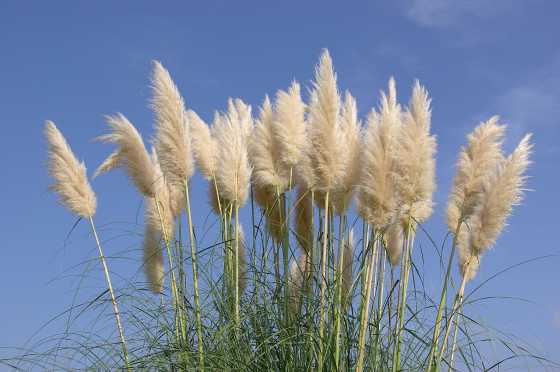
Pampas grass is a flowering grass that can grow as tall as ten feet.
Hole 8: Yellow Jasmine
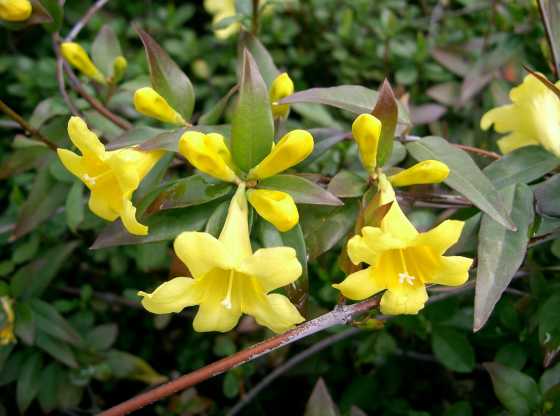
Also known as Yellow Jessamine, and Caroline Jasmine, the Yellow Jasmine is a flowering vine native to southeastern United States. An evergreen that is mistaken for honeysuckle, it is actually poisonous. Yellow Jessamine is the state flower of South Carolina.
Hole 9: Carolina Cherry
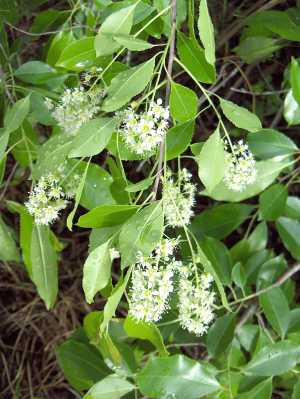
Carolina CherryThe Carolina Cherry is variously known as the Carolina Laurelcherry and the cherry laurel. It is an evergreen flowering tree native to the Southeastern United States. Its leaves and branches break down into hydrogen cyanide when damaged, making it toxic and highly deer resistant. Its leaves, when crushed, leave a scent of almond extract.
Hole 10: Camellia

Camellia is a flowering evergreen shrub that grows up to 60 feet tall. It is native to Asia. It is also known as the Tea Flower, for the use of its leaves as tea. Its seeds are a source of oil.
Hole 11: White Dogwood

The dogwood is a deciduous tree that grows throughout the eastern United States and northern Mexico. it is the state tree and flower of Virgini, the state tree of Missouri and state flower of North Carolina. The name is thought to have come from the plants use in treating mange.
Hole 12: Golden Bell
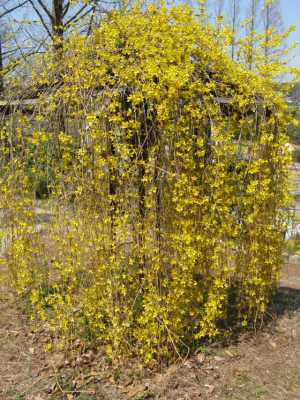
Golden Bell, known more commonly as Forsythia is a flowering shrub from China.
Hole 13: Azalea
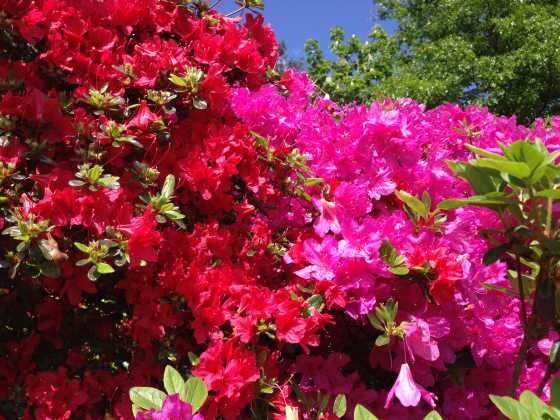
A flowering shrub, Azaleas are native to Asia, North American and Europe. Centuries of selective breeding have created more than 10,000 different varieties. The Azalea is the state wildflower of Georgia. Of the flowers and trees of Augusta National, these may get the most television time.
Hole 14: Chinese Fir

The Chinese Fir is a species of evergreen conifer. The species is native to China, Vietnam and Laos. It produces a durable, scented wood that is prized in China for use in coffins and temples. As an ornamental tree, it is used widely in parks.
Hole 15: Firethorn
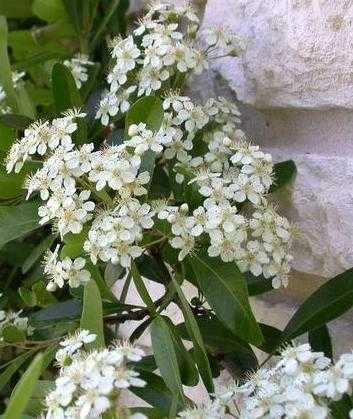
Firethorn is an evergreen shrub with thorns, white flowers and red, orange or yellow berries. It is native in areas from Southwest Europe to Southeast Asia.
Hole: 16: Redbud
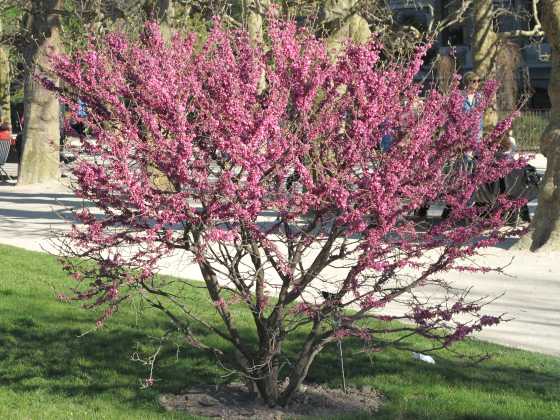
Redbud is a small deciduous tree that also grows as a shrub. Weirdly, it is a member of the pea family (Fabaceae). Species of the Redbud are native to both the old and new worlds.
Hole 17: Nandina

Nandina is a flowering evergreen shrub. It is also called “Heavenly Bamboo” in spite of the fact that it is not bamboo (bamboo is actually a grass). The plant has red berries, that should not be consumed, as they convert to hydrogen cyanide when digested.
Hole 18: Holly

There are more than 400 species of holly, which range across nearly all temperate and subtropical regions of the world. Holly can be either evergreen or deciduous, and comes in variets that include trees, shrubs and climbers.
Tea Olive Photo Credit: By Laitr Keiows – Own work, CC BY-SA 3.0, https://commons.wikimedia.org/w/index.php?curid=8128932
Flowering Dogwood Photo Credit: By Famartin – Own work, CC BY-SA 3.0, https://commons.wikimedia.org/w/index.php?curid=28041080
Flowering Crabapple photo credit: By Bruce Marlin – http://www.cirrusimage.com/tree_Purple_Prince_Crabapple.htm
Magnolia Photo Credit: By Sb2s3 – Own work, CC BY-SA 4.0, https://commons.wikimedia.org/w/index.php?curid=44122660
Juniper Photo Credit: By Famartin – Own work, CC BY-SA 3.0, https://commons.wikimedia.org/w/index.php?curid=32978925
Pampas Grass Photo Credit: By JLPC – Own work, CC BY-SA 3.0, https://commons.wikimedia.org/w/index.php?curid=20985931
Yellow Jessamine Photo Credit: By KENPEI – KENPEI’s photo, CC BY-SA 3.0, https://commons.wikimedia.org/w/index.php?curid=1919165
Carolina Cherry Photo Credit: By homeredwardprice – originally uploaded to Flickr as Carolina Laurel Cherry, CC BY 2.0, https://commons.wikimedia.org/w/index.php?curid=11503793
Camellia Photo Credit: By junichiro aoyama from Kyoto, Japan – Camellia sasanqua, CC BY 2.0, https://commons.wikimedia.org/w/index.php?curid=2787079
Golden Bell Photo Credit: By KENPEI – KENPEI’s photo, CC BY-SA 3.0, https://commons.wikimedia.org/w/index.php?curid=3834252
Azalea Photo Credit: By Famartin – Own work, CC BY-SA 3.0, https://commons.wikimedia.org/w/index.php?curid=33017446
Chinese Fir Photo Credit: By Micromesistius – Own work, CC BY-SA 3.0, https://commons.wikimedia.org/w/index.php?curid=24575163
Firethorn Photo Credit: By Dave Whitinger – All Things Plants, CC BY-SA 3.0, https://commons.wikimedia.org/w/index.php?curid=2319021
Redbud Photo Credit: By Tangopaso – Self-photographed, Public Domain, https://commons.wikimedia.org/w/index.php?curid=31822480
Nandina Photo Credit: CC BY-SA 3.0, https://commons.wikimedia.org/w/index.php?curid=658395
Holly Photo Credit: By Jürgen Howaldt – Own work (selbst erstelltes Foto), CC BY-SA 2.0 de, https://commons.wikimedia.org/w/index.php?curid=389964
Discover more from GolfBlogger Golf Blog
Subscribe to get the latest posts sent to your email.


The red tree just past the walk way behind the 11th hole..what type of tree is it? The tree looks like a red maple..
I’m sorry, I don’t know.
What are the different trees and flowers that can be found in Augusta National according to GolfBlogger.com?